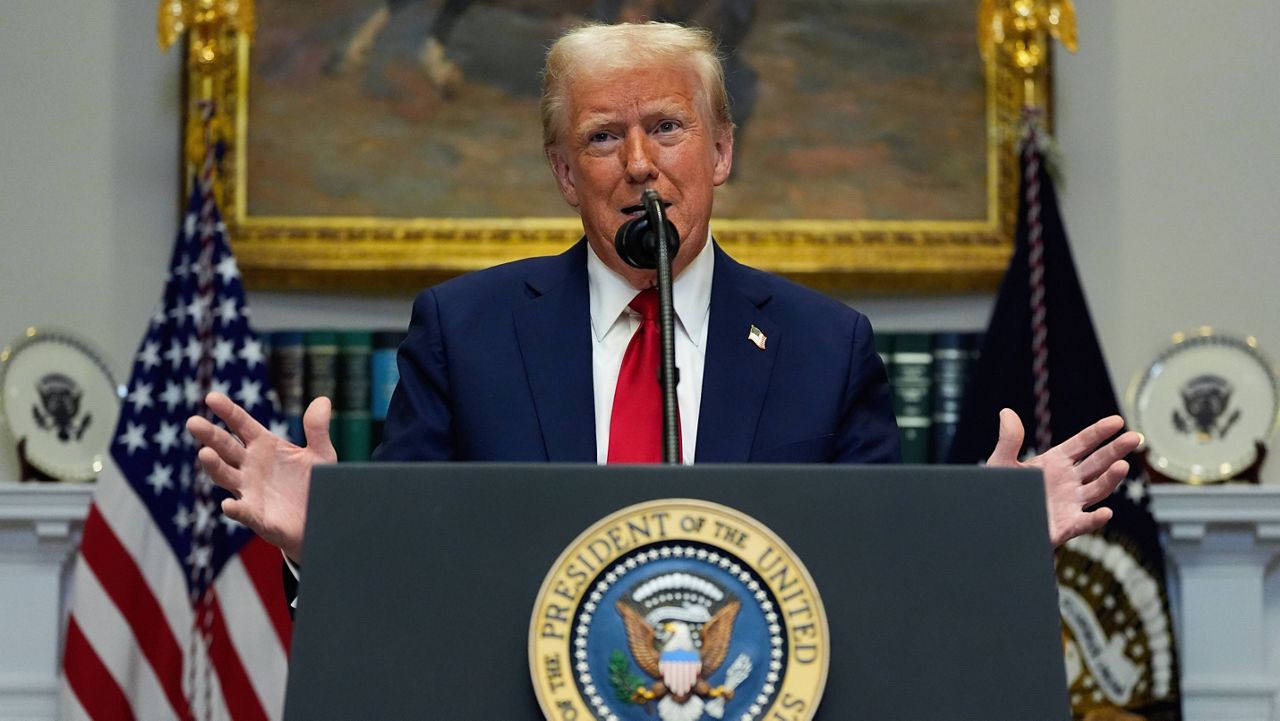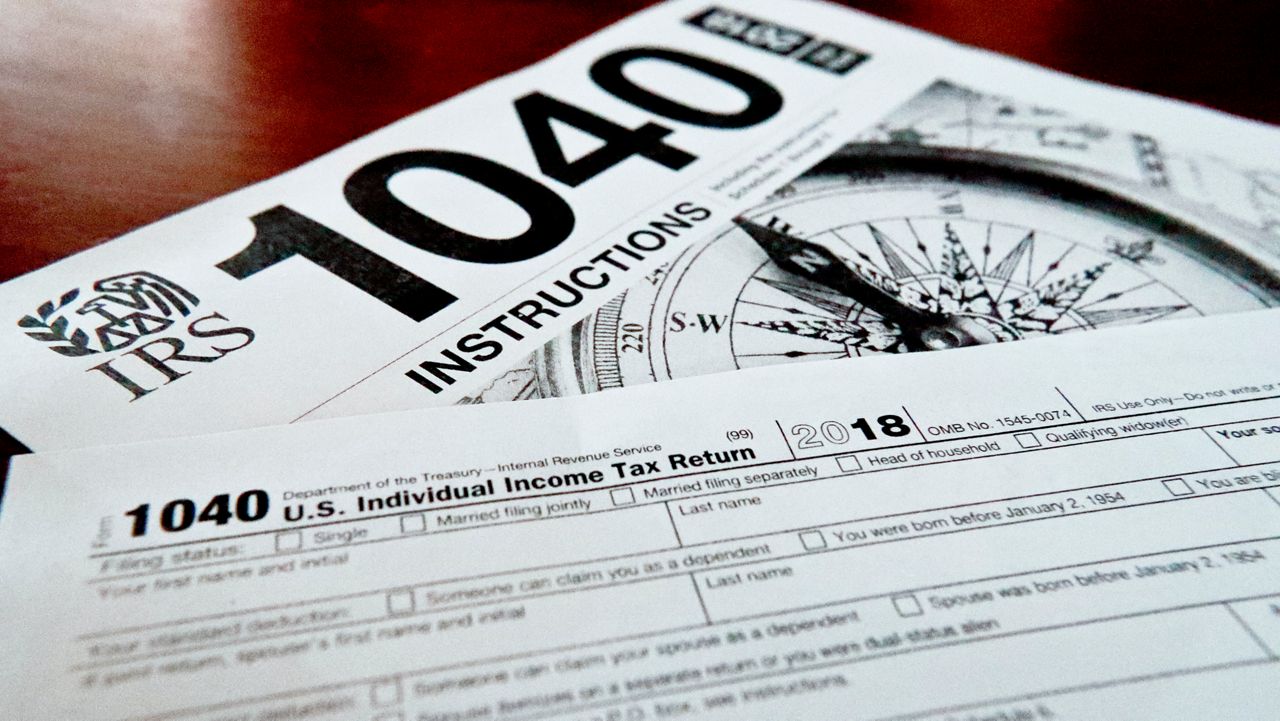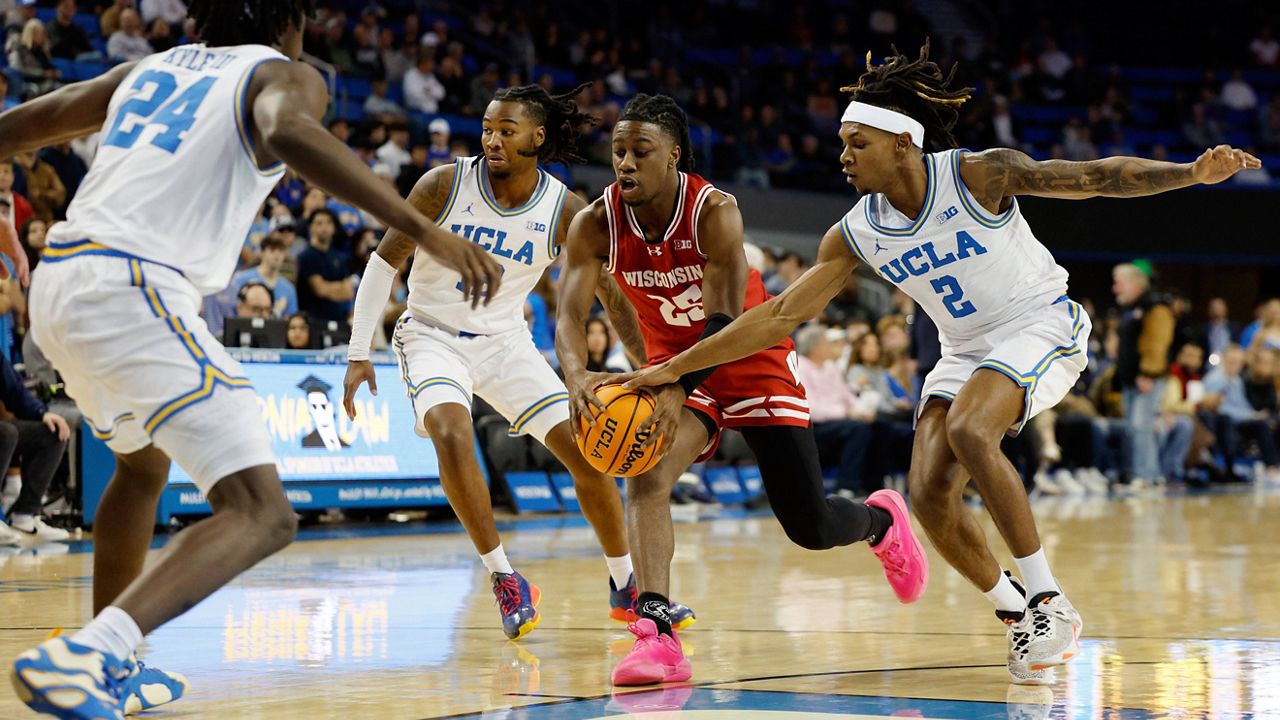SANTA MONICA, Calif. — A massive and old mural in Santa Monica could be altered — or even removed — after public outcry.
The piece, titled “History of Santa Monica and the Bay District,” dates back to the 1930s. Recently, it has come under scrutiny as the nation decides what do to with works of art deemed problematic or upsetting by some communities.
Years after putting his life on the line for this country, veteran and tribal member Albert John Acuña Jr. can still be stopped in his tracks by what he sees.
“That mural is very offensive. It’s very hurtful, OK, cause once again it shows the Indians kneeling to a priest and a soldier on a horse,” Acuña said.
It’s a huge piece of art inside Santa Monica City Hall that’s been around basically since the building opened. Acuña’s cousin Jeremy Gonzalez is also part of the Gabrieleño Band of Mission Indians Kizh Nation. They share the same pain.
“You see the hoof of a horse in the water, which the hoof would be dirty and I guess they look at it like if it’s good enough for the horse to drink, it’s good enough for the Indians to drink,” Acuña said.
For years tribal archaeologist Dr. Gary Stickel has uncovered sacred native sites like a real-life Indiana Jones. Studying the mural alongside Gonzalez and Acuña is one of his easier journeys, at least physically speaking.
“People think it’s historical and they probably like the design of it or whatever, but just like the recent efforts to remove statues of Confederate generals like Robert E. Lee who are traitors to America those statues should’ve come down and that’s why this mural should be covered,” Stickel said.
Protests have brought down monuments across the country and the same could happen here.
Robin Garcia is a facilitator with the Meztli Projects. She’s part of a team of consultants gathering feedback for the City of Santa Monica, asking the community what they think about the piece and how they’d like to proceed. They’re calling it the Reframe: City Hall Mural project.
“This is a highly charged topic because it is much more than about just a piece of artwork,” Garcia said.
This summer, the final report should come out summarizing their findings and suggesting the next steps for which the city has allocated $250,000.
“When we change the narrative, we also have the potential to shift power relationships and change who has access and resources,” Garcia said.
Whether it’s the fight for respect or federal tribal recognition — Acuña won’t give up. Dozens of tribes across California are not federally recognized despite attempts to change this. Much more than just a symbolic gesture, these Indigenous peoples lose out on many benefits and forms of assistance.
“You’re on native land. It has always been native land and it will always be native land,” Acuña said.
As part of the Reframe initiative, you can give comments online or in person. April 1 is the deadline to be included in the public report, which will ultimately guide the city’s action.







